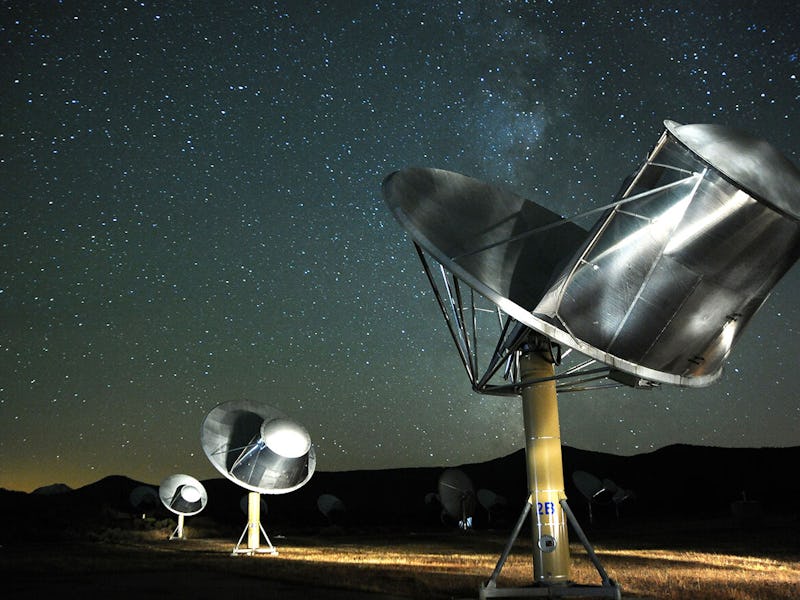Why California wildfires threaten the search for alien life
The Dixie Fire is burning closer to the Allen Telescope Array.

The search for extraterrestrial life is at risk due to the main threat looming over our own species.
The raging Dixie Wildfire in California is spreading closer to the 42-antenna Allen Telescope Array at the Hat Creek Radio Observatory in Hat Creek, California. The facility, which went fully online in 2008, is the first built entirely for the search of extraterrestrial intelligence (SETI).
The SETI Institute, which operates the ATA, evacuated its on-site scientists and engineers as a precautionary measure.
The ongoing threat to the facility highlights the urgency of the climate crisis after a devastating fire season, which is set to become the worst one on record. The wildfire has been burning for two months, destroying at least 960,335 acres of land in its path across Northern California.
The fire is currently about 12 miles south of the array, according to a press statement by the SETI Institute.
The wildfires are inching closer to the telescope array, threatening its ongoing mission.
The Shasta County Sheriff’s Office ordered the scientists and engineers at the site of the telescope array to evacuate as a precautionary measure.
The US Forest Service’s Fire Department removed brush from near the antennas and pruned branches that were hanging lower than ten feet off the ground in order to protect the site against possible damage.
Here’s the background — This is not the first time that the Allen Telescope Array is threatened by wildfires.
In August 2014, wildfires came as close as two miles from the array’s antennas and caused them to heat up. The staff turned down the power for a few days in order for the antennas to cool down.
It also won’t be the last threat. Alex Pollak, science and engineering operations manager, says in a press statement that thanks to climate change, “the entire west coast (is) more susceptible to fire. The situation is not getting better.”
The SETI Institute began operations on February 1, 1985 as a non-profit organization. The institute uses radio telescopes to search for narrow-band radio transmissions from other planets.
Narrowband transmissions are those that, like Earth radio signals, come in at specific frequencies and thus are more likely than wide band transmissions to have come from an intelligent source.
The Allen Telescope Array was first developed with a donation of $11.5 million by the Paul G. Allen Family Foundation.